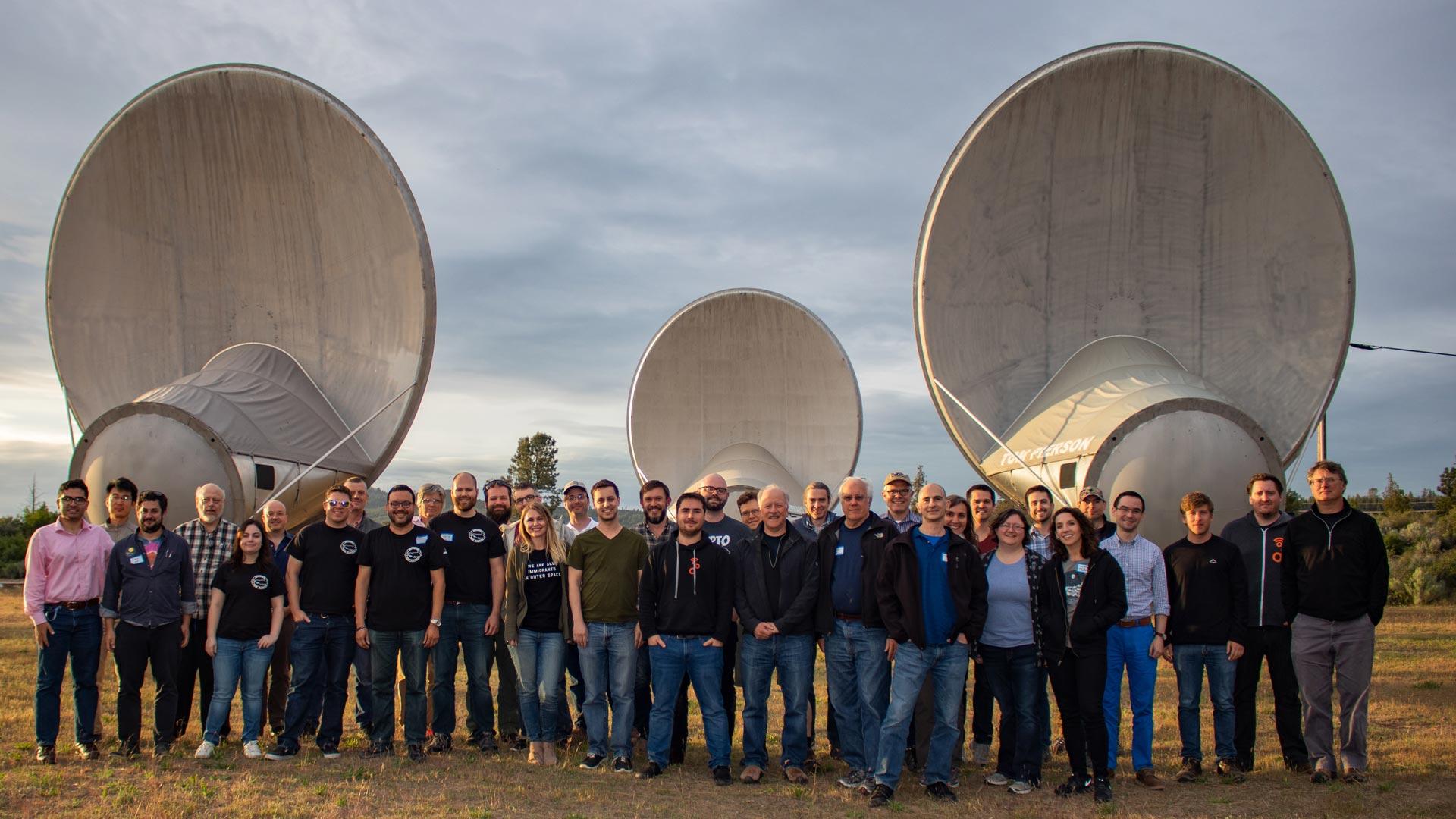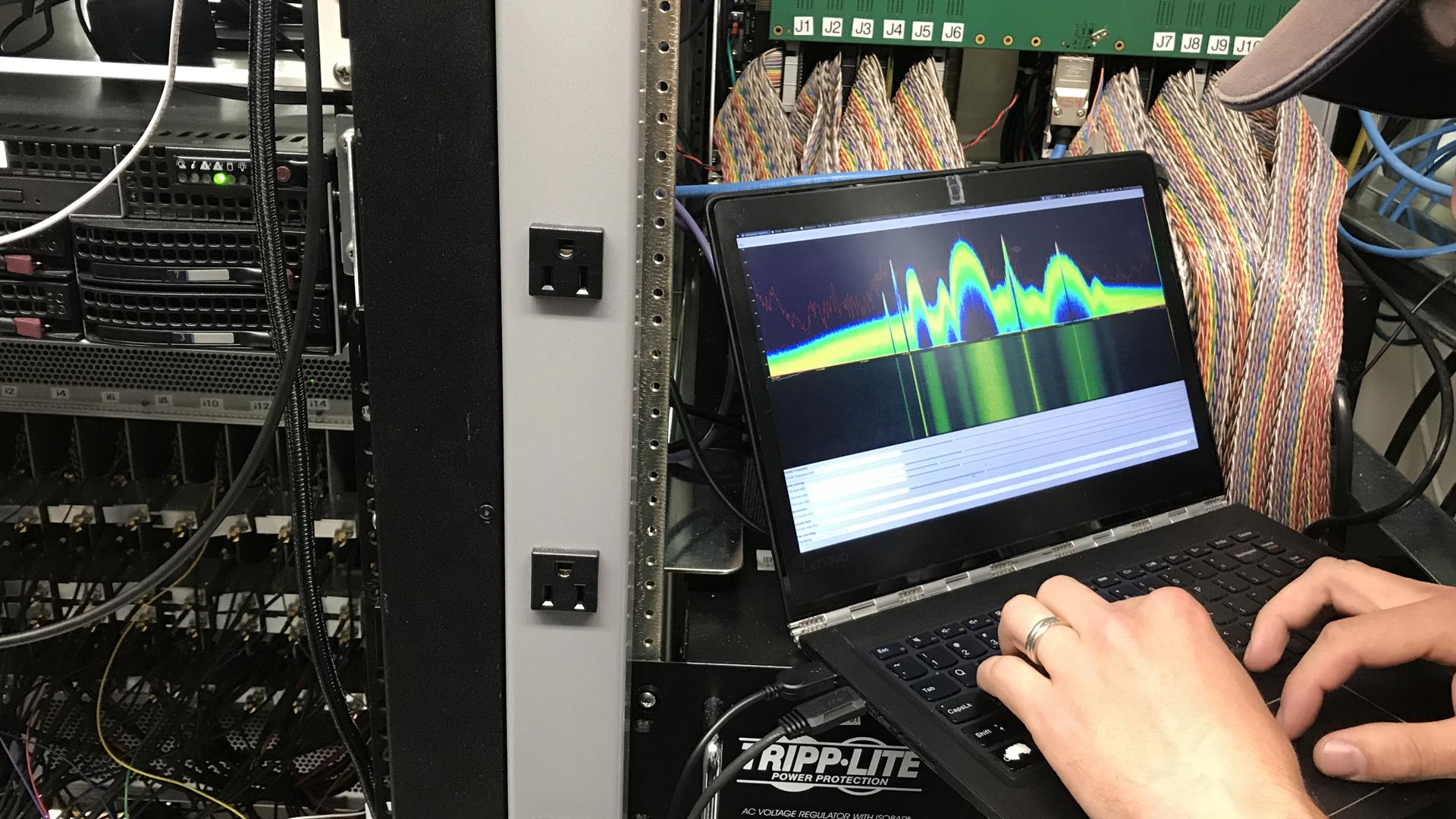
September 8, 2020, Mountain View, CA – The SETI Institute and GNU Radio are officially joining forces to continue work already underway for signal processing at the SETI Institute’s Allen Telescope Array (ATA) at the Hat Creek Radio Observatory (HCRO). This collaboration is an extension of work begun in 2019 to build open-source hardware and software, accessible to both hobbyists and professional SETI scientists, including a GNU Radio module known as gr-ata. Additionally, the SETI Institute will manage contracts and grants for GNU Radio, allowing access to new funding streams to support research and education.
“I first started using GNU Radio as a teaching tool,” said Steve Croft, Community Partnership Scientist on the SETI Institute SETI team. “With $25 worth of hardware and some free software, someone with a little technical know-how can begin to explore the radio spectrum - picking up and visualizing FM radio stations, decoding transmissions from airplane transponders, or detecting the signal their car key sends to unlock their vehicle. But I soon discovered there was a whole community of people developing and building cutting-edge devices with this technology, and they welcomed me into their collaboration.”
GNU Radio is an excellent teaching tool for students interested in radio engineering, digital signal processing, radio astronomy, SETI, and related fields. Collaboration with the education and outreach team at the SETI Institute has the potential to increase the accessibility and reach of these tools for a wide range of education audiences, including high school and undergraduate students, as well as amateurs who wish to set up GNU Radio powered radio telescopes at home.

GNU Radio is not only the world’s most widely used free and open source software toolkit for radio and wireless, but also one of the most prominent research and education communities in the field of software radio engineering. By partnering with the SETI Institute, the GNU Radio community is able to expand the reach and impact of its open source efforts in important ways. Working with the SETI Institute opens new opportunities in education and outreach, the chance to work with global radio research facilities (including the ATA), and collaboration with the SETI Institute’s already significant investments in both STEM and cutting-edge research.
“This partnership will bring important and substantial benefits to both the GNU Radio project and larger community, and is also a reflection of GNU Radio’s success, impact, and importance in the field of RF and radio,” said GNU Radio President, Ben Hilburn. “Some of the most foundational goals of GNU Radio have always been to make the fields of RF and wireless accessible and fundamentally empower people to explore and build, through free and open source software, for the benefit of everyone: academics, educators, researchers, hobbyists, and government. In the SETI Institute, we’ve found a partnership that will lift both organizations up together towards our common goals.”
GNU Radio is free and open-source software (sometimes called “libre software”), and is licensed under the GNU Public License version 3 (GPLv3). The GPL ensures that everyone has the freedom to use, modify, share, and contribute to GNU Radio.
Scientific research at the SETI Institute encompasses everything from the Big Bang and formation of stars, to planets and habitability to life and complexity – and it is in the area of SETI science (search for extraterrestrial intelligence), or technosignature searches, that it is perhaps best known. The SETI Institute operates the ATA, a 42-dish radio telescope array designed to search for radio emissions from extraterrestrial technologies. Upgrades currently underway at the ATA will significantly increase the ATA's receivers' sensitivity and permit the development of a new digital signal processing system that will bring enhanced capabilities. GNU Radio on the ATA is providing a much easier path to entry for experts from industry to engage with radio telescopes without needing to learn specialized software systems.

Derek Kozel, the initial Principal Investigator for the GNU Radio project within SETI said, “The advanced hardware and complex signal processing challenges that the SETI Institute is working with present an ideal platform for GNU Radio to develop and test new features for taking advantage of cutting-edge heterogeneous computing environments.”
This collaboration between the SETI Institute and GNU Radio will enable the development of a common infrastructure for software at the ATA and possibly allow for software sharing among additional sites. Techniques from the RF industry for identifying and classifying signals have great promise in sifting through the "haystack" of human-generated radio frequency interference in search of the technosignature "needle."
“I'm excited about what this new partnership between GNU Radio and the SETI Institute will mean,” said Croft, “not just for the new capabilities we'll build at the ATA, but about the potential for new education projects, new connections with industry, and new ideas about how to open participation in SETI to the world.”
“The opportunities presented by this merger of the SETI Institute and GNU Radio are significant and exciting for both organizations,” said Bill Diamond, President & CEO of the SETI Institute. “We can extend the reach and impact of our science through this collaboration while providing new opportunities for the software defined radio community to seek federal funding for impactful research and further technology development. We look forward to the innumerable possibilities unleashed through this partnership.”
GNU Radio will be hosting its tenth annual conference next week, September 14-18, which will take place virtually for the first time. Registration for the main track is free; full paid registration (allowing access to the hands-on workshop) is sold out, but there's a waiting list, and additional spots may open up. SETI Institute researchers will be taking part in the conference:
- Steve Croft and Alex Pollak will give an overview talk about technosignature searches, the ATA and its capabilities, and the new GNU Radio powered instrumentation installed there
- Ellie White, an undergraduate student who participated in Berkeley SETI Research Center's Research Experience for Undergraduates Program this summer, collaborated with Derek Kozel from GNU Radio, Alex Pollak, from the ATA, and others, to develop the gr-ata modules. She will present a poster and give a lightning talk at GRCon
- Members of the ATA team and the GNU Radio community will present a hands-on workshop involving analysis of data from the ATA in the GNU Radio environment
About GNU Radio
GNU Radio is a free and open-source software development toolkit that provides signal processing blocks for software radios. It is widely used in research, industry, academia, government and hobbyists. Its active online community and multiple annual events are a focus for the development of new signal processing algorithms and techniques and attract hundreds of contributors.
Download full Press Release HERE.
About the SETI Institute
Founded in 1984, the SETI Institute is a non-profit, multi-disciplinary research and education organization whose mission is to lead humanity’s quest to understand the origins and prevalence of life and intelligence in the Universe and to share that knowledge with the world. Our research encompasses the physical and biological sciences and leverages expertise in data analytics, machine learning and advanced signal detection technologies. The SETI Institute is a distinguished research partner for industry, academia and government agencies, including NASA and NSF.
Contact information
Rebecca McDonald
Director of Communications
SETI Institute
189 Bernardo Ave., Suite 200
Mountain View, CA 94043
rmcdonald@seti.org





